50 Car Designs That Are So Bad They Belong On A “Do Not Drive” List
In today’s market, buying an attractive vehicle doesn’t necessarily mean that you’re buying a good vehicle. In fact, manufacturers are just as likely to launch a dud vehicle as they are a quality car. Whether it’s a car with a terrible design or one with more serious issues such as mechanical problems, the timeline of automobiles is sprinkled with spectacular vehicular duds and bad apples.
Many of these infamous fails have been forever burned into the minds of vehicle enthusiasts and general road-users alike. Can’t think of any off the top of your head? No worries! We’ve got you covered.
Here are a 50 of our favorite bad vehicle designs.
Aston Martin Lagonda
If you grew up during the ’70s, you surely know all about the happenings of the decade. Disco was in full swing, funk was making an appearance, and hip-hop was barely starting out. Cars, as it seems, were also making headlines…for how terrible they were.

The Aston Martin Lagonda was designed to be the most modern car on the market in terms of technology. It had computer-operated electronics, CRT-based displays, and a ton of other new features. Unfortunately, none of them worked as intended.
Suzuki Samurai
Often described as sporty, colorful, extra, and too rambunctious, the Suzuki Samurai accurately describes the decade it was created in — the 80’s. This tiny little 4×4 was new to the market when early adopters noticed that it had a few issues, namely, the tendency it had to flip over.

Yep! That tendency was just as scary as it sounds. When taking normal corners at average speeds, it wasn’t uncommon for the Samurai to flop onto its side or roll with the riders still inside. It definitely wasn’t a win for the Japanese vehicle market.
Citroen Pluriel
Taking a look into the past, the French have a lot to be proud of. For centuries they’ve been paving the way in arts and literature and all things stylish. Their car designs have been, for the most part, pretty solid in the creative field, too — well, until the Citroen Pluriel rolled off the assembly line.

The Pluriel, as described by Top Gear magazine, “is about a useful as a teapot made of chocolate.” Sounds very useful, doesn’t it? Right, so what’s wrong with the Pluriel? According to reviews, it had reliability issues and a track record of obvious glitches that were played off as “new and exciting features.”
TransAm Type K
Nealy made into a reality in 1977; the Pontiac TransAm Type K was a retro vehicle with a unique feature. If you can’t tell by the photo, the feature we’re talking about is how the windows open up, which, to us, honestly looks like a pair of ridiculous wings.

The manufacturing of this particular vehicle was highly debated between the GM/Pontiac head offices. In fact, there were promotional articles in magazines and newspapers, as well as creative ad campaigns launched to the public. Thankfully, this one never made it into the light day of day.
Ford Model T
The first mass-produced vehicle to grace the United States streets, the Ford Model T was more than exciting — it was also terrible. Its production ceased by 1927, as despite being the most innovative technology at the time, it just didn’t perform.
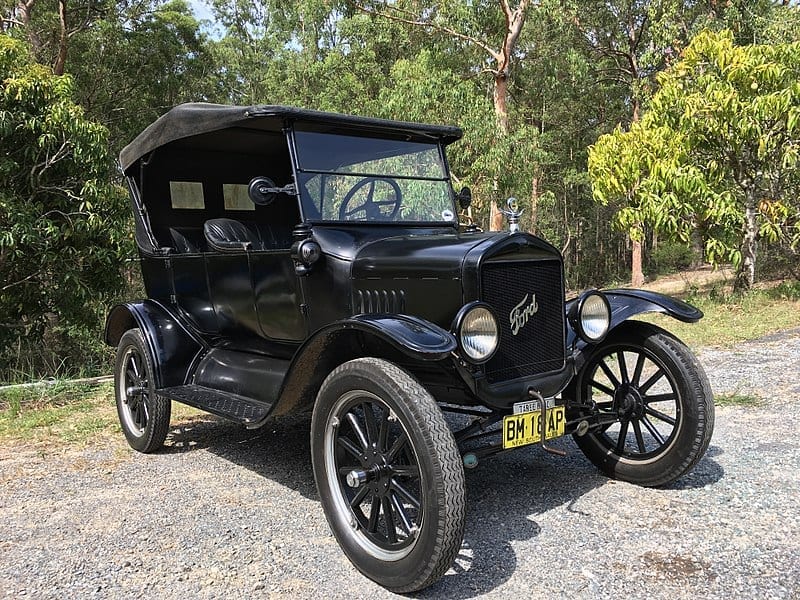
Although the photo above shows us a relatively normal-looking vehicle, the earlier versions of the Ford Model T weren’t quite so ordinary looking. In fact, earlier versions didn’t have a windshield, had a poor engine, and had brakes that were prone to failure, making this car extremely dangerous.
Reliant Robin
With a name like the one this vehicle has, you’d think that it would be the epitome of reliability and, while that’s a sensible assumption to make, it’s wrong. Unfortunately, the Reliant Robin wasn’t actually reliant in the slightest.
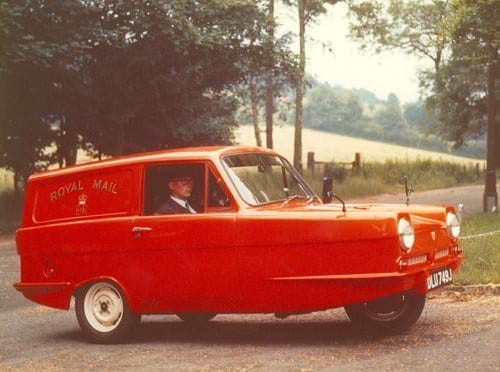
To the dismay of its enthusiasts, the Reliant Robin was known for its tendency to topple over. Sure, it’s 3-wheel design earned it some attention, but after the bad reviews started to come in, not even its unique look could save it from becoming a laughingstock of a vehicle.
Michelin PLR
Today, this monstrosity of a car is found exclusively in France, where it’s used for novelty and show purposes. There’s nothing really wrong with this car other than the fact that it’s very slow, tapping out at 111 miles per hour. Regardless, it has found its way onto our list for a very obvious reason…

Its terrible, unappealing appearance. With 10 wheels and really odd body shape, it’s not all that nice to look at. Actually, it’s quite the eyesore if we are being honest. We wouldn’t drive it if it were the last working vehicle on the planet but would you?
1998 Fiat Multipla
Over the years, the Fiat Multipla has been used for commercial and business purposes. The problem we have with this vehicle lies in its 1998 model, which was a major fail for Fiat. This early version wasn’t nearly as successful as its newer counterparts and was a true let down for the company.

The 1998 version is one thing: ugly. It’s been compared to the kind of vehicle that a Martian visiting Earth for the first time would drive instead of the vehicle that a soccer mom would drive, which is what it was intended for. The interior was spacious and well-thought-out but was forgotten and ignored thanks to the terrible exterior styling.
Saturn Ion
Looking at it, the Saturn Ion doesn’t seem like it’s the worst car ever. It has an average appearance and no strange styling designs or features, so that’s obviously not why it made it onto this list. Nope! This American dud appears here thanks to its lack of go-power.

The car was a hefty one, easily coming in as one of the heaviest cars of the decade and, as such, required a high-power engine. However, the Ion creators somehow managed to forget that part, releasing a heavy vehicle with an unimpressive, sluggish engine and no power.
Bricklin SV1
Debuting in 1975, this car was designed to be “the car of the future.” It’s most interesting feature was its 100-pound gullwing style doors, but its overall make comes in at a close second. Why? The body was made of plastic!

The car was supposed to be safe, featuring a ton of safety features like compressible bumpers, but we wonder how safe a plastic-bodied vehicle could truly be. In addition, it’s safe to say that the SV1 wasn’t the most attractive car on the market, either.
Zundapp Janus
The Germans, who are known today for their high-quality vehicles, haven’t always pushed out the best autos. They have been manufacturers of quite a few very notable (and shame-worthy!) duds, the Zundapp Janus being one of them.

To start, this car is quite clearly very odd-looking. Adding insult to injury, though, it was fueled by a 250 cc 14hp engine, which, at top speeds, could only manage to propel the vehicle forward at 50 miles per hour. Unsurprisingly, most vehicle enthusiasts took a hard pass on this one.
Chrysler K-Car
A 1980’s car by Chrysler, the K-Car, is one of this brand’s many spectacular failures. The car was sold at an affordable price so that it was accessible to the masses, which is great except that the vehicle couldn’t be relied on by any definition of the word.

As the years went on, it became known for door handles that fell off, faulty transmissions, and rusty bodies among a host of other issues that quickly clouded its already poor-by-association reputation. Eventually, it was nicknamed the “Poor Man’s Car.”
Peel Trident
If you’re reminded of the futuristic TV show The Jetson’s when you look at photos of this car, you’re far from alone. It’s a 1960’s vehicle that screams bizarre! It’s looks, though, isn’t the biggest problem people had with this thing.

A few of the biggest complaints were that only one person could fit inside of it, it was hard to park and hard to steer, and it had a terribly designed plexiglass roof that was known for practically cooking those inside it. Not to mention that its name is quite odd, too.
PT Cruiser Convertible
Although the PT Cruiser Convertible isn’t nearly the ugliest vehicle on our list, it still wasn’t the hit that the company hoped it would be. This is unsurprising when you consider that the original PT Cruiser wasn’t a fan favorite, either. The original and the convertible were pretty much the same vehicles with one minor difference — the roof.

The convertible lacked a roof, making it look like a traditional PT Cruiser with its roof chopped off. Otherwise, there was nothing different and no improvements to speak of. How unfortunate for the company, who was undoubtedly very unimpressed with how much money they wasted.
GM EV1
The GM EV1 came out in 1997. It was supposedly, according to GM, the best electric vehicle on the 90s market. It was designed to fit with California’s zero-emissions mandate and promised to be reliable, fun to drive, and good for the environment.

The battery used in the EV1, however, wasn’t up to par. It couldn’t hold a charge long enough to satisfy the needs of everyday drivers and, in addition, was expensive to make and even more so to purchase outright. For many years it was known as the car that “killed electric vehicles.”
Davis D-2 Divan
Another fantastic example of three-wheeled vehicles that failed to catch on in America, the Davis D-2 Divan, was a 1940’s vehicle produced by Davis Motor Company. The Divan was heavily marketed and expected to be seen on roads around the world.

However, the company’s head overestimated the car’s popularity and underestimated its cost, angering dealerships and vehicle investors almost immediately. In the end, the company shut its doors, and today there are only 12 surviving Divans out there.
AMC Pacer
This compact, two-door car was said to be the future; instead, it quickly became the past. Its fuel economy was a hit with drivers, sure, but otherwise, that was about as much good as you’d ever get out of it. See, the AMC Pacer had a habit of spinning out of control on sharp turns.

Shortly after its release (and after a handful of unfortunate corner-related accidents), the Pacer was replaced by other vehicles. Sales of the car dropped, and AMC was put out of business quicker than you could say “piece of junk.”
Ford Pinto
The Ford Pinto is what we’d consider a “classic bad car.” This is mostly because even though it is a 1970’s vehicle, it’s still the butt of many bad jokes to this day. If you’re old enough to know about cars in the ’70s, you probably still remember this gem of a terrible car.

If you don’t already know, the Pinto was famous for its tendency to burst into flames during collisions. No, not high-speed highway collisions — low-speed collisions like backing into someone else’s car in a parking lot. Talk about an eventful trip to the grocery store.
Chevrolet Chevette
On the market for only 12 years, the Chevrolet Chevette was a hit thanks to its affordable pricing. This being said, the Chevette just goes to prove that sometimes buying the cheapest thing available isn’t always the best long-term solution, as the vehicle was actually pretty disappointing when it came to performance.

The Chevette was lightweight, so naturally, it should have been able to move at lightning speeds, right? Wrong! The Chevette had a very underwhelming motor and a maximum 50 horsepower speed, making no sense when the car weighed less than almost every other vehicle on the market during that period.
Pontiac Aztek
You might recognize the Pontiac Aztek from Breaking Bad, where Walter White drove it as his primary vehicle. This along gave the Aztek a surge of popularity, which, combined with its super cool name, made it a pretty popular car for its first few years.

It was controversial from the very beginning, though, and many vehicle owners hated it right from the first time they laid eyes on it. The engine was weak, and the body was made of plastic but the vehicle sold for a large sum, so the hype surrounding it died pretty quickly.
Maserati BiTurbo
Maserati, which is known today for its high-class vehicles, pushed out a real dud back in the 80s. 1981 through 1994, they produced the BiTurbo. This vehicle covered the basic bases: good engine, decent acceleration, and an overall attractive appearance.

Drivers who bought the car began to complain, though, that the car started to fall apart after a few years of use. The BiTurbo earned itself a reputation of being, in the nicest terms possible, “a giant pile of garbage that can’t handle the aging process.”
Crosley Hotshot
Weighing 1,100 pounds and measuring only 145 inches long, this chunky little car was marketed as America’s first postwar vehicle when it was released in 1949. The Hotshot quickly proved to be a huge hunk of junk instead of the breakout success it was intended to be.

It was dangerous, bulky, and incredibly slow, which took away from its supposedly sporty aesthetic. Today, experts think that this car’s dooming factor was its engine, which allowed the vehicle to move at a max speed of 50 miles per hour.
Yugo GV
To give you an idea of how bad this little car was, we must share with you the running joke surrounding the vehicle: “Yugo nowhere.” Sure, this play on words is pretty funny, but the car must have had some serious issues to earn a reputation like that, right?

Right. The Yugo GV didn’t sell well in Yugoslavia, where it was created after the Cold War and was introduced to the American market, where, unsurprisingly, it didn’t do very well either. It was the cheapest car on the American market, but it didn’t have much going for it.
Triumph Stag
Like many of the cars designed in the ’70s, the Triumph Stag had a sleek design and terrible engineering. When it worked (which was seemingly only when it wanted to), it made for an okay drive — until its engine overheated and things got dangerous.

To remedy this problem, a cooling system was installed. Unfortunately, this system was no better than the engine it was trying to supplement, as it was prone to boiling over when it got too hot. Honestly, it seems like this car was doomed right from the start.
Mondial 8
The Ferrari brand isn’t usually associated with duds, which is why the creation of this car was so shocking. It was marketed as the “Cheap Ferrari” in the 1980s and was everything a good car isn’t: large, heavy, and lacking in go power.

Its V8 engine only produced 214hp, which made it terribly underwhelming compared to other Ferrari models. Also, though, its overly ambitious electronics system was known for failure, which was almost always accompanied by the smell of burning wires. Reportedly, every Mondial 8 that was built had a system failure at some point.
Smart Fortwo
A subdivision of Daimler, Smart Cars is a brand that typically knows what they’re doing. Even though Smart Cars might not always push out the next big thing, you can guarantee that their vehicles will have quality engineering and high-class construction.

Well, you used to be able to guarantee that anyways — until the launch of the Fortwo, which pretty much-rendered everything we just said untrue. The Fortwo had a rear-mounted engine and front-mounted cooling system (which makes no sense!). This meant that the passengers inside the cabin were frequently cooked on hot days.
Cadillac Fleetwood
Cadillac has become a popular name in North America. Known for its various lines of sleek and stylish vehicles, almost every car enthusiast can pick a Cadillac out of a group when they see one. In the case of the Cadillac Fleetwood, though, the factors that made it stand out weren’t quite so positive.
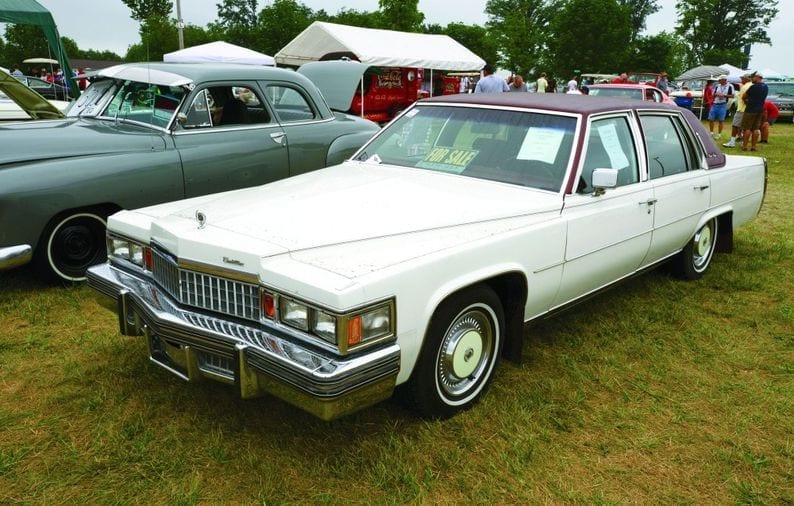
The Fleetwood was known for its poor performance, which could often be witnessed by other road users and pedestrians. This car was prone to bucking and jerking, as well as stalling, making loud and irritating noises, and total system failure.
Dodge Journey
The 2016 model of the Dodge Journey is one of the more modern vehicles on our list. Even though it’s a 2016 model and its parent company has plenty of vehicular knowledge, the Journey somehow still flopped spectacularly. In our opinion, this flop is due to the lack of care that went into its creation.
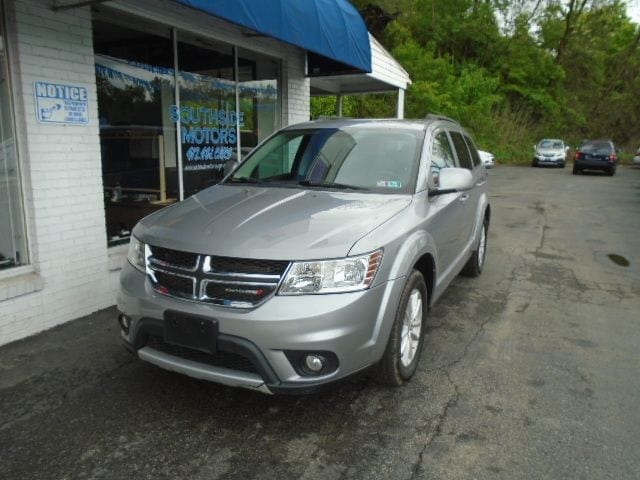
The Journey’s interior sports a ton of nearly outdated tech that struggles to maintain good grades in the reliability category, which is the first downfall. The second notable problem is that the vehicle has a hard time getting enough power to successfully transport a cabin of 7 people, even though its passenger capacity is 7.
Dodge Omni
One of the newer models released by Dodge in the 1970s, the Omni, was designed to adhere to a new decade’s rapidly changing vehicle standards. Gone were the V8-powered cruisers of the 60s, and it was a compact, safe vehicle for thriving families.

As it turns out, though, the Omni wasn’t the vehicle that families had been expecting and, in actuality, experts feared that it was nothing more than a nicely bundled safety hazard. It had bad brakes, poor steering, and had issues staying on the road.
Renault Le Car
As you might have guessed, the Renault Le Car was created by the French car company, Renault. The Le Car was a 70s economy model designed to compete with the likes of the Volkswagen Rabbit and Golf and various Japanese imports.

Once on the street, the Le Car proved to be incredibly underwhelming. It was slow, awkward, and put together with minimal regard for safety or quality. The Le Car fell apart frequently and couldn’t be relied on; it was removed from the American market after just a few years.
Ford Edsel
The Edsel is one of the biggest failures ever to grace the world of automobiles. Everything about the car was overhyped and played up, making the car seem like it was the best thing to hit the roads since the invention of the first vehicle when, in actuality, it wasn’t really that special.
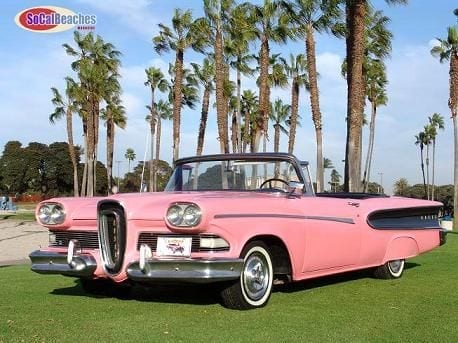
Sure, it had good power and was relatively reliable, but the public’s expectations weren’t met with this vehicle. Thanks to the uppity marketing, buyers were expecting a fantastic new car; what they got instead was an upscale Ford with a strange front design .
Stout Scarab
The Stout Scarab is known as the world’s first minivan. It’s also, by many, known as the world’s first really ugly car. The shape of the thing is somewhere between a loaf of bread and a football, partly due to creative choice and partly due to the rear-mounted V8 engine.

Adding to the general lack-of-appeal that this car had is what its name represents. If you didn’t know, the “Scarab” part of the car’s name is also the name of an Egyptian dung beetle. How fitting! Thankfully, only 9 of these monsters were ever built.
2003 Nissan Murano
Upon its original launch in 2003, the Nissan Murano was pretty successful. It showcased the new appearance that the brand was moving in the direction of and was a hit among drivers. As time went on, though, a small problem came to light.
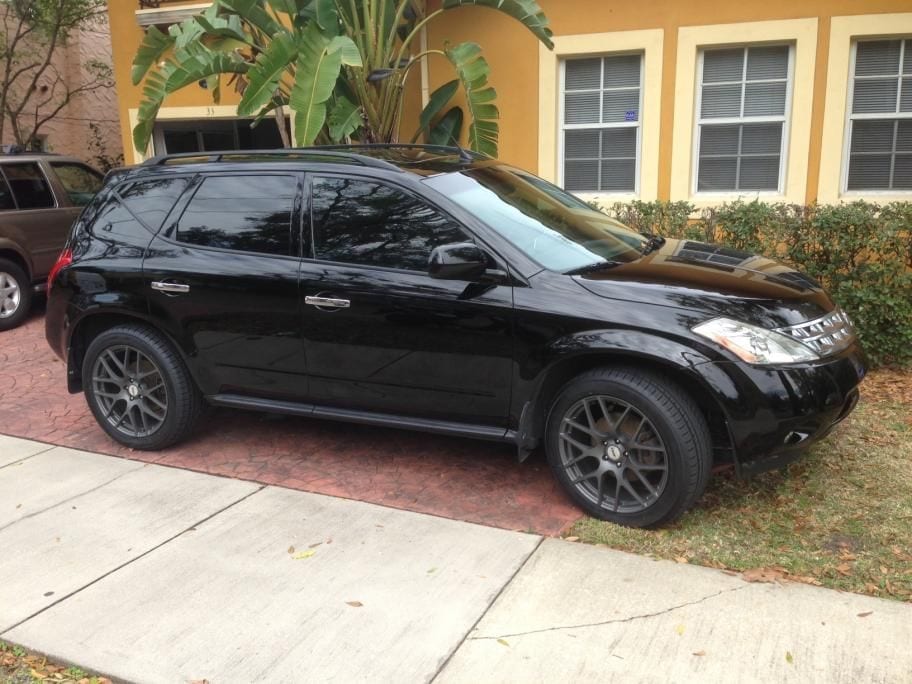
The Murano frequently locked and stiffened during cornering, making it hard to steer and posing a potential safety hazard. Luckily, the problem was fixed quickly, and the later models of the Murano were much nicer to take corners in — not to mention ten times safer.
Chevrolet Monza
A four-passenger, sub-compact car from 1975, the Chevrolet Monza had various minor changes made to it in its early years. After scrapping its original engine, the engine was replaced with a V8 4.3-liter, which, you’d think, would be much better.

The new engine was anemic but also proved to be hard to do maintenance on. To gain access to the engine, those working on it would have to tilt the entire vehicle! This being said, the vehicle didn’t have any noticeable safety issues, but it really lacked in ease or maintenance and was highly disliked by many repair shops.
Nash Metropolitan
Back in the day (1954), parents would warn their teenage children to behave and get good grades — or else they’d end up getting the Nash as their first vehicle. Getting a vehicle as a reward for bad grades definitely doesn’t sound like a threat, does it? Well, in this case, it was.

The Nash was known for its terrible, under-performing engine. It was also prone to tipping onto its side while turning corners, which made it a danger on the road — especially if you’re a teen who wants to go as fast as possible.
Oldsmobile Cutlass Supreme Diesel
The creation of this model stemmed from a desire to upgrade previous models which had 5.7-liter V8 engines. Like this one, the upgraded versions had 4.3-liter diesel engines and were supposed to be the “next best thing.” However, as you can imagine, they flopped fantastically.

The problem with the 1979 Oldsmobile was that its engine liked to blow up when it hit 90hp in power surging. Needless to say, it was quickly labeled as one of the worst vehicles on the market at the time by both car experts and everyday drivers.
AMC Concord
Coming in on our list of the worst cars ever to grace the roads is the AMC Concord of 1978. Designed to be a luxury vehicle, the Concord was anything but commonly losing bolts and falling apart in the middle of the freeway.

In addition, it had poor shocks that really didn’t do much of anything. It provided its backseat riders with an unpleasant ride, as its roof liner was known to sag thanks to the slap-dash glue job used to secure it.
Austin Allegro
Made from 1972 to 1983 by British manufacturer Austin-Morris, the Austin Allegro was a certified disaster on wheels. It had many technical problems and issues with its mechanical parts, as well as minor design flaws like awkward dimensions.

As we said, though, it had technical problems, which, ultimately, are what took it off the market. Its front axle would collapse, and its body was prone to flexing while being jacked up (which had to be done often because of said axle problem). Many people were fans of this vehicle, but just as many – if not more- were not.
Ferrari Testarossa
Since its 1984 release, the Testarossa has climbed the collectors’ charts, spurred on by its 4.9-liter flat-12 engine. As a collector car, it has a lot of charm and a special place in many hearts. Back when it was released and intended to be used as an everyday driver, though, it was a different story.

The Testarossa was slow by industry standards and had a large footprint. Owning the Testarossa also meant many inevitable trips to the auto body shop, as the vehicle was known to be unreliable. The financial burden of the vehicle caused its popularity to decline quickly.
Hummer H3
The Hummer H3 of 2005 is a vehicle that, since its release, has attracted a certain type of person. This person is likely to enjoy revving their engine and having street races with their buddies at 200 miles per hour while managing to make the most noise possible and loving every second of it.

The vehicle is large and bulky, loud, and not very gifted technically. It also offers poor visibility, horrendous blind spots, and an underpowered engine that seems pretty weak when considering what type of vehicle it’s installed in. It does have good cargo space, though…so that’s a plus.
Morgan Plus 8
The Morgan Plus 8 was created in the United Kingdom and made its way to America in 1968. The vehicles sent to America were fitted with propane gas tanks, which, if you know anything about cars, you know, is a terrible idea.

As a result of the propane engine, which was necessary for the car to pass the decade’s fuel emissions test, the car was sluggish. Many people compared going 30 miles per hour in the Plus 8 to the feeling of going 60 miles per hour.
Chevy Citation
Initially, the 1980 Chevy Citation sold really well. It was actually named Motor Trend’s Car of the Year that year, and in total, more than 800,000 units were sold within the first year. So, what went so wrong that the car ended up on this list?

Consumer Reports went wrong. The company reviewed the vehicle, revealing their professional opinion that the vehicle was so badly built that it was a danger to drive. From here, sales plummeted, and by 1985, Chevy ceased production of the Citation.
Elcar
Ever seen an electric microcar? Probably — but have you seen the Italian electric microcar, Elcar (also known as the Zele)? Probably not because it didn’t take off in the United States despite a ton of advertising and modest price point.

The Elcar was made of fiberglass and, as you can see, was not the most attractive car on the market. It did so poorly that it was only produced for two years in the ’70s, it’s top speed of 10 miles per hour in cold weather and hefty 8-hour recharge time proving to be highly undesirable.
Dodge Royal
Despite its name, the Royal was anything but regal. At the time, Dodge had a relatively good reputation, but that quickly changed after the launch of this sedan. The 1957 model came with an extensive laundry list of problems that even Dodge’s relatively good reputation couldn’t mitigate.

It was known for having a major water leakage problem in the trunk and a tendency to rust and fall apart with regular use. The worst part, though? The car was prone to total engine failure for seemingly no good reason. After this disaster, it took Dodge years to rebuild its reputation.
Fuller Dymaxion
The Fuller Dymaxion was created during the Great Depression and came with three separate prototypes. Ultimately, the goal was to create a car that could fly, swim, and drive — and apparently, this submarine-shaped vehicle was going to be just what the doctor ordered.

The Dymaxion, however, never made it to the mass production stage as Buckminster Fuller, the creator ceased production shortly after creating the prototypes. He claimed that the car handled poorly and made the decision despite the general public’s interest.
Waterman Arrowbile
Honestly, the Waterman Arrowbile should have stayed a prototype. This super odd-looking little vehicle/tailless aircraft was supposed to be able to drive and fly. The idea didn’t take off, though, and only five were ever made.

The concept just wasn’t appealing to the general public and, let’s face it; it’s pretty easy to see why. Imagine trying to drive a vehicle with giant wings down the road and turning corners? Nope, no, thank you. Today, we’re still waiting for the idea to sound appealing.
Jensen S-V8
If you’ve ever heard the story of Frankenstein, you’re surely familiar with the way Dr. Frankenstein created his monster using parts from various bodies. Well, that’s exactly what looks like it happened with the Jensen S-V8.
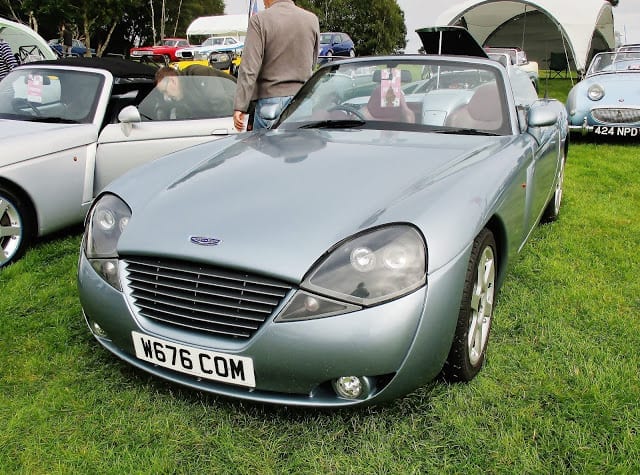
While there wasn’t really anything technically or performance-related wrong with this vehicle, its seemingly mismatched, patchy appearance has earned its spot on our list. If we didn’t know better, we’d think that the driver of the vehicle in this photo was an amateur auto body builder, getting creative with his vehicles.
Nissan Cube
Like the S-V8 above, the Nissan Cube is pretty much free of any overly noticeable faults, dangers, or negative points in terms of how it works. What gets it onto our list, though, is its body. Call us shallow if you want, but millions of Nissan-lovers worldwide agree, hence why the cube is so unpopular today.

The shape of the cube, which, as you can see, is very cube-like, makes it look like a box on wheels as it drives down the road. It looks like a clown car, for lack of better words, and we half expect a ton of circus clowns to come pouring out of the tiny interior.
Infiniti Q50
Infiniti is known for its high-class, expensive luxury vehicles, and there aren’t very many bad reviews of Infiniti vehicles. Of course, however, there are always exceptions — and the Q50 just happens to be one of them. It also happens to be enough of a lemon to be featured here. Hooray!

The overall score given to this vehicle by Consumer Reports is only 57 (ouch!), which definitely isn’t great. The vehicle has poor fuel economy, uncomfortable front seats, fussy controls, and a ride that is anything but smooth and pleasant.
Jeep Compass
Recently, the Jeep Compass got a reboot, but today, we’re talking about the earliest version of the vehicle. Originally, the Compass earned itself a very poor reputation, with reliability being one of the weaker ownership points.

It was a noisy vehicle, with slow acceleration and terrible visibility, which made it a hazard to drive. Worse still, the brakes were unreliable, and turning corners was enough to cause the car’s driver to break out in a sweat — from both stress and effort.
